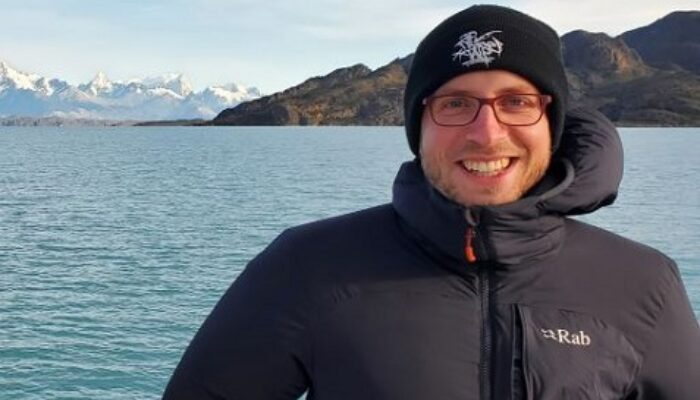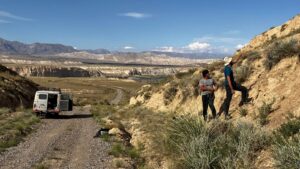
This blog post is part of our series: “A day in the life of a geomorphologist” for which we’re accepting contributions! Please contact one of the GM blog editors, Emily or Emma, if you’d like to contribute on this topic, or others.
by Andreas Ruby, Doctoral Researcher, GFZ Potsdam, Germany
Email: andreas.ruby@gfz-potsdam.de
Hi,
I’m Andi, and it still feels quite fresh, but as of now I’ve already been in the geomorphology game for about two years. I’m doing my PhD at the GFZ in Potsdam in Germany, where I spend a lot of my time in the lab, processing all the samples we collected during our various field trips to exotic places including Patagonia and Kyrgyzstan. I’m interested in the landscape history of rivers. How did they react to past changes in climate? Normally, they adjust their long profile by incision or aggradation due to changes in the water to sediment ratio, which is often a direct link to erosion rates.
But what are these samples about? Well, they are mostly cobbles and boulders from fluvial terraces along these rivers. If we date these terraces, we can understand how the rivers responded to past climate changes. You might have heard of “Cosmogenic Nuclides”: we are measuring the concentration of the isotope 10Be in quartz minerals within the cobbles and boulders, which accumulates while the cobbles and boulders are exposed to cosmic radiation at the landscape’s surface.

Figure 2: Discussing science in Kyrgyzstan with our local guide Tilek Omurbekov. PC: Taylor Schildgen
But in the early morning when I’m in the lab, I’m more concerned about losing my beryllium than feeling excitement about the cosmic connection or thinking back to the very cool fieldtrips when we sampled these rocks. On the other hand, try to imagine that feeling when you finally have your first results in your hands, and when eventually all the concentrated work turns into simple numbers and points in your GIS…!
Puh, after that heavy stuff, it’s lunch time. I mean it’s already 12:02 pm. For our very German-behaving international group, it’s very much time to go for lunch!
Let’s do something else in the afternoon. A full day in the lab drives you crazy (iykyk). So, I focus on other things or methods. I can play a bit with a numerical model and look at how a Patagonian river might adjust its long profile to different uplift rates, sediment inputs or sea level changes. But once I realize that modelling is actually hard, I shift to an area where I’m a bit more experienced: remote sensing, yay. While looking into some data quite early in my PhD, I realized that we can estimate the age of fluvial terraces by analyzing their spectral signal! A handheld spectrometer or a normal Landsat satellite can estimate the extent of chemical weathering in terrace surfaces by observing the reflected full light spectrum, and based on the amount of weathering, we estimate the terrace age. Never heard of it? It’s pretty cool!

Figure 4: Using the spectrometer during field work in Patagona on a fluvial terrace surface. PC: Henry Crawford
On good days, we eat cake in the afternoon at a nearby café. And that’s definitely a substantial investment of my salary into my mood, mental health, and the economy.
The rest of the day, I try to shape and contribute to the communities I’m part of. This means the PhD community at the GFZ itself, and also the “Young German Geomorphologists”. Because these groups are made up of early career scientists with the same topics and issues as me, I can learn directly from them and can also contribute my knowledge or the lessons I’ve learned.
Of course I leave the office too late most days, but still right in time to push my “academic body” to the limits through different sports. As it might be true for most people, this is the most critical key (beside the cake obviously) for my mental health.
Stay sciency!
Did you enjoy this blog post? This blog post is part of our series: “A day in the life of a geomorphologist” for which we’re accepting contributions! Please contact one of the GM blog editors, Emily or Emma, if you’d like to contribute.


